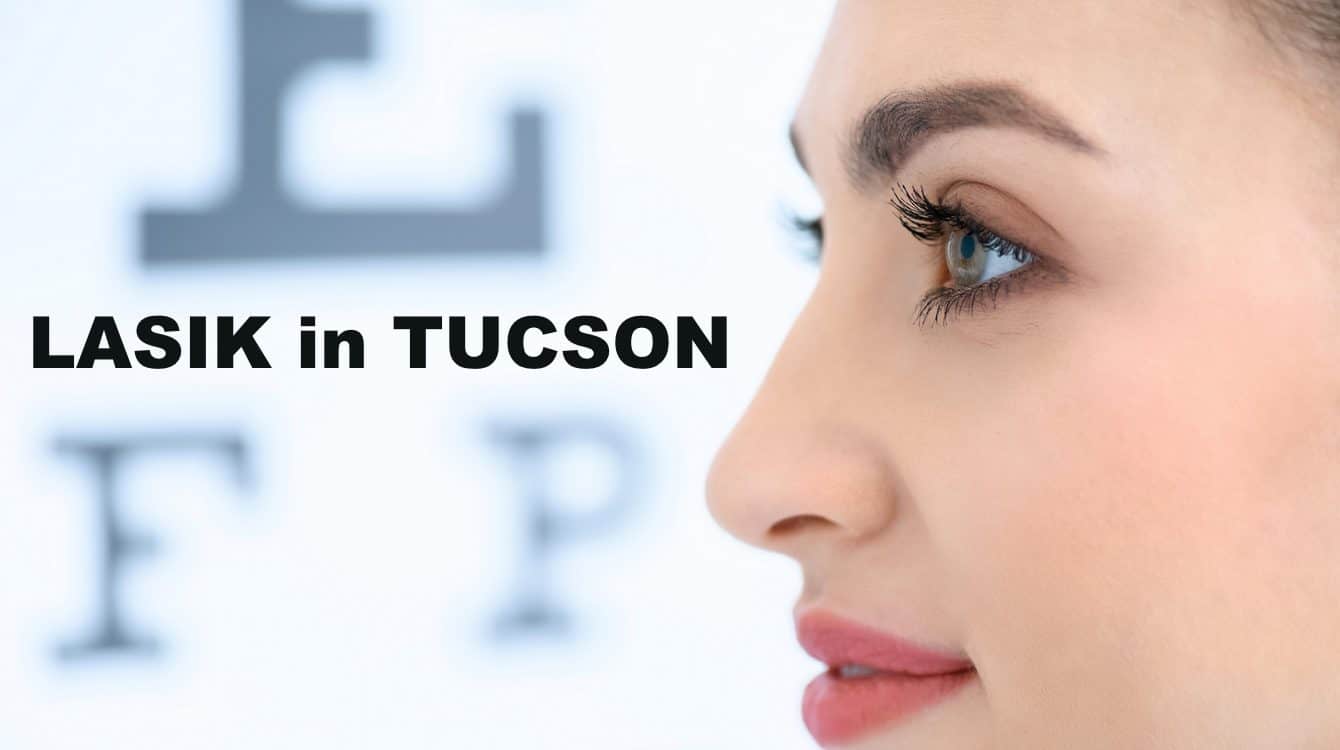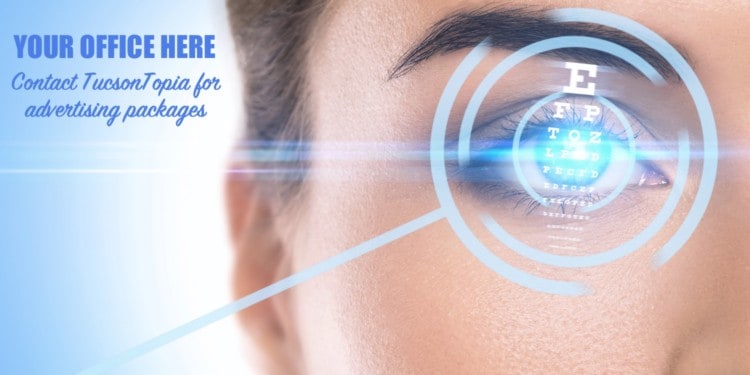
Imagine a life without eyeglasses and contacts. No more reaching for your spectacles in the morning! Instead, you greet the day with clear eyesight - free to do whatever activity you choose. Swimming, hiking, biking, running, going to the movies, baking in the kitchen - all of these hobbies are yours to pursue.
With eye correction surgery, you can push new limits and meet new goals. You can finally see the clock across the room without having to ask a family member for the time.
According to the American Academy of Ophthalmology, "more than 90 percent of people who have LASIK achieve somewhere between 20/20 and 20/40 vision without glasses or contact lenses. Additionally, more than 300 peer-reviewed studies have shown that, on average, 95 percent of patients were satisfied with their outcome after LASIK surgery."
Most people think of LASIK when they are considering a vision correction surgery, but there are actually numerous options available. Read on to learn more about the pros and cons of LASIK and PRK (two of the most well-known refractive surgery options).
LASIK stands for Laser-Assisted In Situ Keratomileusis. The word "keratomileusis" literally means "sculpting" of the "cornea." A mechanical blade or a laser device is used to cut a flap in the cornea. The flap is folded back, revealing the stroma (the middle section of the cornea). Pulses from a computer-controlled laser vaporize a portion of the stroma and the flap is replaced.
With LASIK, a thin flap is created on the cornea to allow reshaping of the tissue beneath. The flap, which isn’t visible to others, will secure itself back to the eye, but it will always remain.
LASIK surgery can be used to correct nearsightedness (myopia - you can see objects up close, but not far away), farsightedness (hyperopia - near vision is blurry), and/or astigmatism (when the cornea curves or flattens unevenly).
LASIK was first performed in 1991 and first approved by the FDA in 1999. Since then, over 40 million LASIK procedures have been performed worldwide.
In 2001, the FDA approved "bladeless" LASIK or IntraLASE, in which the surgeon uses a femtosecond laser instead of the microkeratome blade to make the corneal flap incision. In 2002, the FDA also approved the use of Wavefront or CustomVue technology. This is a corneal mapping process that creates a guide for the laser and provides a personalized treatment for correction with even higher prescriptions, thin corneas, or large pupils.
In May 2003, the FDA approved the use of the Customized Wavefront LASIK using the VISX CustomVue System, an entirely new generation of laser vision correction and the predecessor of the system used by Dr. Shapiro. With CustomVue custom wavefront LASIK, the goal of surgery is no longer to equal the best glasses or contacts, but to actually exceed the quality of vision of glasses or contacts.
As with any surgery, there is a risk for infection and inflammation after LASIK is performed. These complications are rare and usually able to be treated quickly with medication.
Side effects may include: hazy or blurry vision; difficulty with night vision and/or driving at night; scratchiness, dryness and other symptoms of the condition called "dry eye"; glare, halos or starbursts around lights; light sensitivity; discomfort or pain. These side effects are usually cleared away within the first few hours, days, weeks, or months after surgery. The Academy recommends patients talk with their ophthalmologist to understand the potential risks and to ensure they are a good candidate for surgery.
PRK, short for photorefractive keratectomy, is a type of refractive surgery. Like LASIK, it can be used to correct myopia (nearsightedness), hyperopia (farsightedness), and astigmatism. Whereas LASIK works underneath your cornea, PRK uses a pulsing beam of ultraviolet light on the surface of your cornea.
In PRK, the cornea’s outer layer is removed entirely before the reshaping process; that layer will grow back over time.
PRK was the first type of laser eye surgery for vision correction. PRK was first performed in 1988 and first approved by the FDA in 1995.
The American Academy of Ophthalmology notes that "PRK may be a better option than LASIK for people who have very dry eyes or thin corneas." People with very active lifestyles or combat jobs also sometimes opt for PRK since it does not involve cutting a flap in the cornea like other refractive surgeries.
Side effects of PRK may include glare and halos around lights, particularly at night; scarring of the cornea; cloudiness of the cornea (called corneal haze); and corneal infection.
EPI-LASIK (first performed in 2003) and SMILE (first performed in 2017) are other refractive eye surgery options in Tucson.
The American Academy of Ophthalmology does not keep records of average cost per city/state, but our research indicates that you can expect to pay between $1900-$2500 per eye or $3800-$5000 for both eyes.
Most medical insurance will not pay for refractive surgery. Patients considering LASIK should check with their individual medical insurance providers regarding refractive surgery coverage options or discounts.
Bladeless, laser procedures are still surgeries and therefore still involve a certain amount of risk. Patients should always discuss potential risks and side effects with their ophthalmologists before surgery, regardless of it being an all-laser or a blade surgery.
While LASIK cannot cure presbyopia (the gradual vision loss that often happens when we age), monovision is one strategy for LASIK patients over the age of 40 interested in decreasing dependence on reading glasses. Monovision is a type of LASIK surgery technique where one eye is corrected for nearsighted vision and the other is corrected for distance. With this technique, the brain is trained to have the eyes focus at different distances by having each eye work independently instead of together, and therefore improve vision at different distances.
You will need to have someone drive you home after LASIK because you will have your eyes covered and closed for the first 5-6+ hours.
Your surgeon will give you specific instructions. In general, expect to limit strenuous activity for about 1-2 weeks after LASIK. Walking, working on the computer, and other general life activities are typically approved within 24 hours of surgery, but consult with your doctor and follow his/her guidelines.
Again, check with your surgeon for best practices. The general rule of thumb tends to be to wait approximately two weeks after surgery before going swimming.
Great question! With dozens of LASIK providers in Tucson, it’s hard to pinpoint just one. Each surgeon has a unique personality, communication style, and educational background.
The best way to find a LASIK surgeon in Tucson is to ask friends and family members for recommendations. You can also check yelp and google reviews. Finally, you can search by zip code on the American Academy of Ophthalmology website. Select "refractive surgery" under "subspecialty."
After you have asked for recommendations and done some research, call one or two offices to schedule an evaluation. Most LASIK providers will offer a complimentary consultation to do preliminary tests to see if you are a candidate for refractive surgery.
A referral is not needed to schedule an appointment with a refractive surgeon. That said, your regular eye doctor may have some great recommendations for the best surgeons near where you live.

*Watch this page for new and updated information about LASIK in Tucson.
**The information on this page is not intended as medical advice. Please talk with your doctor about if LASIK is right for you.